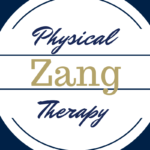For those with back pain, be it chronic or new, the question of what to do is present? Do I rest, take medication, see a professional (but WHO?), rely on the advice of friends or family? A quick internet search for back pain will pull up nearly 73 million hits and back pain exercises another 3 million (as of this post). So what is the average person to to?
Here in lies that difficulty answering the question…it depends. It depends on many of factors that cannot be answered simply in this forum, BUT I will attempt to dispense some general advice for those suffering.
If you did not know >80% will experience back pain (at some point). So statistically speaking you either have dealt with personally or know someone who has suffered with back pain. With this in mind, if I poll 20 people, I will most likely get at least 10 different responses as to what they think helped or may help their back pain. This brings me back to the title…Does it Matter What Exercise?
As an evidence-based physical therapist (meaning I use scientific literature to facilitate my treatment decision making), this notion that it may not matter what exercise for back pain is difficult to swallow. I want to believe that my process of examination and treatment really makes a difference in the lives of those with back pain. (But ultimately it may not)
The counter point is (and natural history is to get better) that the treating provider just happened to be the last person the back pain suffer saw before their pain finally resolved. But did their treatment really make them better? But how can that be?…Because profession wide many treatment approaches are applied with reasonable success.
For those with new (or acute) back pain, the answer is most likely YES…Specific treatment matched to their presentation very likely assisted them in faster recovery. Research proves that matching treatments (in an acute presentation) results in better and faster outcomes. On the other hand, those with chronic back pain the answer is not so simple. Chronic back pain tends to persist for various reasons and thus treatment approach must be different.
With chronic back pain, it is often the secondary factors that are difficult to overcome. These secondary factors include: muscle weakness, reduced endurance, poor muscle coordination, and various maladaptive pain responses. With all these factors at play, researchers are finding that it may not make a difference WHAT exercise. What is important is the patient education and positive reinforcement provided.
The overall message to those suffering with chronic back pain is MOVE. Getting oneself active again in spite of pain is important. Activity is necessary to “re-wire” the brain to not be so hypersensitive to pain. Plus, activity helps to recondition the body/muscle and re-teach muscle coordination. 
If you are someone who suffers with back pain, the time for action is now. Continuing to wait or take a passive approach is doubtful to help. Medication, injections and surgery are rarely the answer. Rest (avoidance of activity) is not the answer…this will only result in muscle weakness and deconditioning, which can be difficult and take time to overcome. (This is especially true with surgery). Just look at Tiger Woods. Now 4 back surgeries, the best care money can buy and still no better.
If you are looking for more information on treating back pain, then you came to the right place. Click on the following link HERE to learn more and gain access to a valuable resource loaded with tips for those limiting activities due to back pain.

I totally agree that it is very important to continue moving if you suffer from a chronic back pain but I was surprised to hear that it does not make much difference what exercises I do. I think I also need to go and see a doctor who could examine my back and give his professional opinion on it as the pain is too strong sometimes. Thanks for the information!
It is not so much it doesn’t matter which specific exercise because some may not be helpful. The data points to the fact if we can just help people to not fear movement as much and to get moving that they can begin to feel better. I would certainly not discourage anyone from visiting a doctor but will offer a piece of advice regarding medical professionals and treatments. Each provider has certain tools to use. Doctors rely upon imaging (known to be unreliable in spine care), medicine (some can be harmful or addictive and not helpful) and referring out to other providers because they do not know what to do. Other providers (PT, chiro, massage, etc) may use hands on care, exercise, or some other means to help. When it comes to chronic pain, unfortunately the answer is not simple and learning specifically about pain can be a positive step toward living with less pain and becoming more active again.